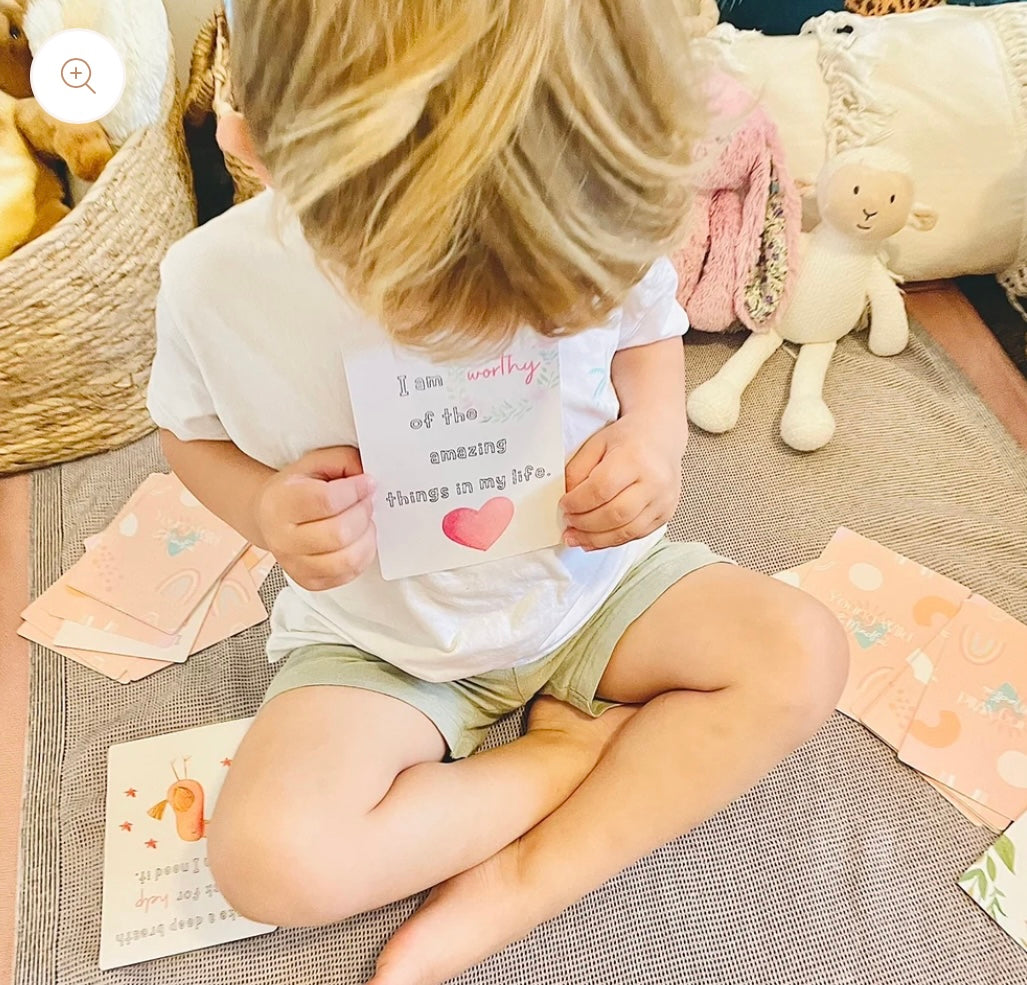
9 Ways to Cultivate Mindfulness in Children
Share
1. Lead by Example
Children learn by observing. Incorporate mindfulness into your daily routine by practising techniques like deep breathing, yoga, meditation, mindful eating, journaling or taking moments of quiet reflection. Modelling these behaviours can encourage your child to follow suit.
2. Listening and Communication
Teach children the art of mindful, active listening by engaging in mindful conversations with them and other family members. Demonstrate active listening by giving them eye contact and listening without any distractions (like phones or to-do lists!). When we really listen to our children without judgement, we can understand them better and help them to feel heard. It also teaches them how to effectively communicate with others, fostering empathy and compassion.
3. Breathing Exercises
Simple, deep breathing exercises can support children to relax, focus and regain control when experiencing big emotions. Teaching them to take slow, deep breaths, emphasising the importance of pausing and observing their breath as it goes in and out, is a great way to begin supporting them in becoming aware of their breath.
4. Mindful Eating
Encourage mindful eating by teaching children to pay attention to their senses while consuming food. Discuss the textures, smells, and tastes of their meals, fostering an appreciation for the present moment during mealtime. Being present and aware during mealtimes, without distractions, encourages children to notice their thoughts and feelings, as well as physical sensations such as hunger and fullness. An added bonus is that slowing down when eating promotes better digestion, too.
5. Nature Walks and Observation
Take mindful walks in nature, encouraging children to observe their surroundings keenly. It could even be a simple short walk in your neighbourhood along some houses with gardens. Engage their senses by asking what they see, hear, smell, and feel, fostering a deeper connection with the natural world around them and encouraging curiosity. You might even like to do a drawing together entailing what you saw on your walk.
6. Gratitude Practice
Instil a gratitude practice by encouraging children to say ‘thank you’, and reflecting on things they are thankful for each day. These two simple exercises promote an appreciation for life's blessings, and create a solid foundation of gratitude that children can revert to when, at times, life can throw curveballs and seem ‘unfair’.
7. Play and Creativity
Engage children in mindful play and creative activities like colouring, drawing or crafts. Encourage them to focus on the present moment while enjoying these activities by asking simple questions to show your interest. It’s important, however, to also give them lots of space and time to ‘flow’ and be free. Upon completion, ask them some questions about their creation, such as their favourite thing about it, or how they felt when they were completing it. This can prompt them to reflect and feel proud, and also supports communication about their interests and thinking processes.
8. Integrate Positive Affirmations
Incorporate the use of positive affirmations into your daily routine. Help children select affirmations that resonate with them to promote confidence and self-belief. Incorporating positive affirmations into morning routines or bedtime rituals can also be an excellent way to connect with your children. By encouraging children to repeat affirmations aloud or silently, it reinforces the message of self-empowerment and nurtures a positive self-image. Through repeated practice, children will learn to draw upon the skill of positive self-talk when faced with challenges so that they can tackle them with ease, contributing to their overall emotional wellbeing and self-confidence.
9. Yoga and Mindful Movement
The practice of yoga and mindful movement can further enhance their mindfulness journey. Yoga combines physical movement, breathing, and mindfulness, promoting relaxation and self-awareness. Encourage children to explore simple yoga poses that emphasise balance, flexibility, and strength, while also incorporating mindfulness techniques like focused breathing and body awareness. Yoga can help children connect their mind and body, fostering a sense of calmness and enhancing their ability to be present in the moment. It instils a deeper understanding of the mind-body connection, empowering children to manage stress and navigate emotions more effectively.
As you can see, there are many ways to incorporate mindfulness practices into your children’s lives. We hope you now have some new ideas to guide your children on their mindfulness journey!
